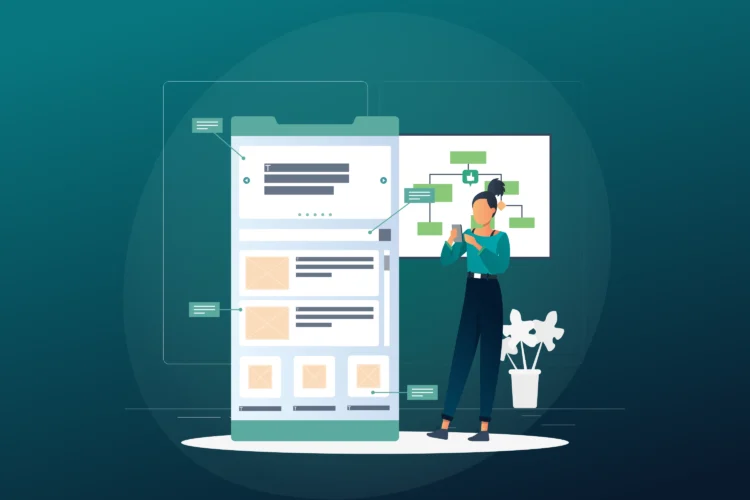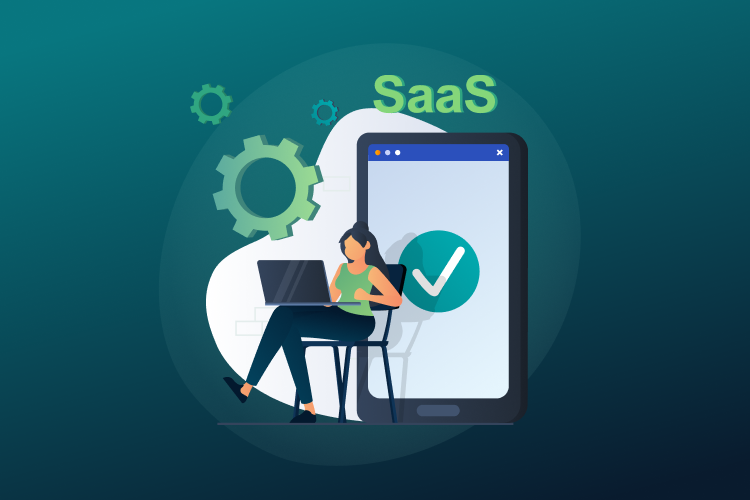
Product adoption is the process of consumers and users becoming aware of your product, recognizing its value and benefits and using it. It can be roughly divided into 4 to 6 stages, depending on the nature of your product or service.
We believe that a good SaaS product strategy involves some extra steps and stages specific to the increasingly competitive world of software services. Let’s dive into them straight away:
- Awareness – the initial stage where potential users learn about your product and its features
- Consideration – the stage marked by potential users’ awareness and spiked interest about the benefits and uses of your product
- Purchase – the stage when users buy your product
- Active use – the stage when users regularly use your software
- Renewal – the stage when users continuously use your software over a longer period of time
Sounds like a long journey?
Well, that’s how you should view it – because SaaS product adoption is all about making the most of the road, rather than racing to the final destination. Want to make the best of it? Here are six do’s and don’ts in each stage of your product journey.
Stage 1 – Awareness
During this stage, you want to tell the world your product is here. Now, while your mom and your best friend may think your idea is the best thing since sliced bread, once you start marketing your SaaS product you may discover that the rest of the world isn’t exactly flocking to adopt your software.
There are hundreds of thousands of online products vying for users’ attention as we speak – and the thought of standing out in the sea of seemingly endless choice may seem frightening. So what do you do?
Do – Focus on the USP
Of course, this is not the article where we tell you how or where to promote your new software. However, if there is one take-away advice for the awareness stage of SaaS product adoption, it’s focus on your unique selling proposition. Build your marketing efforts around the thing you’re doing best – whether it’s unique design, simple user experience or great customer services.
Be aware of the fact that your software will never be adopted by ALL the people who need the core product – and put your efforts into carving out the target group that responds to your USP.
Don’t – Don’t lie
Have you ever been using some app on your phone only to be interrupted by an ad showing an interesting gameplay? Yet the way it’s played pushes all of your buttons – because the person who is playing keeps making terrible decisions and straight up gets themselves killed by running straight into some fire pit, and before you know it, it’s game over. Damn them, you say to yourself! I’m going to install this game and do this whole thing right!
So far so good! The ad has done an immaculate job – it reached you, spiked your interest, pushed all of your buttons with 10 psychological tricks at the same time, and managed to convert you in a matter of minutes. But once you install the game (entering the consideration stage of the product adoption process), you realize this game is something entirely else. The whole exciting chase you saw is not incorporated into the actual game. There are two options in this scenario – one, the actual game is good enough for you to keep engaging, and two, you uninstall it immediately and go back to the page to complain they are liars and scammers.
So what’s our take-away lesson here? While it may be tempting to use a couple of great marketing tricks to speed up potential users’ product adoption journey, making promises you cannot keep is a terrible way to present your SaaS to the world. It’s frustrating, irritating and dishonest. Yes, marketing is all about embellishing your product – but straight out lying is taking it too far.
Stage 2 – Consideration
The consideration stage of SaaS product adoption can take several forms depending on your product. It can come down to users simply perusing your website to learn more about the product, or it can be a trial. While some product managers would put trial into “conversion” or “purchase” category, we believe it’s better to think of this stage as consideration, encouraging you to slow down and really focus on the potential user’s experience.
View consideration stage as the most important step in your user’s product adoption journey.
Do – Invest in informative content
How many times has an ad led you to a SaaS website where several minutes of scrolling and reading provide you with a very vague idea of the software’s use and features? Their website may be great, beautifully designed and contain attractive copy, but still tell you nothing about the software.
So, the take-away lesson is this – make sure potential users are welcomed into consideration with clear information about what your software service does, what users need to do to acquire it and what they get once they are onboard. Invest in content that shows the uses and benefits of your software product – including testimonials, case studies and white papers.
If you offer trials, invest in quality onboarding content – videos and tutorials with added value such as tips, hacks and advice. If the trial requires users to submit their credit card info, be transparent about the charging rules and period.
Don’t – Ask for the effort or money too early
We get it – creating software is a big investment and you and your team need to pay the bills. But getting people to adopt your SaaS product requires a little bit of patience. So, when users enter the consideration stage, understand that they want a no-strings-attached relationship. They want to see what your software does and whether it’s a right fit for them. They don’t owe you anything. Unless your product is a never-seen-before miracle or they need it desperately, most users simply won’t bother to create another account (they already have dozens) or give you their credit card info.
Even worse, if you hide everything that’s good about your software behind the paywall, how many people are going to gamble to discover whether there’s something worthwhile paying? Yes, sometimes this strategy works if product managers simply want to weed out everyone who wants a free ride – but before you incorporate this gamble into your product adoption strategy, think twice whether this is the right road for your SaaS.
For more advice on how to move from consideration to purchase stage, check out our tried and tested SaaS Conversion Rate Optimization Tactics.
Stage 3 – Purchase
Ta-da! You made it this far – the user decided to sign up and pay for your software. With this stage, you can conclude the introductory phase of the SaaS product adoption process – you know that the customer sees value in your product and that they were willing to pay for it. However, the tricky thing with software services is maintaining this relationship – a monthly/yearly plan means that that subscription has an expiration date.
Do – Fine-tune onboarding process
When we say fine-tune the onboarding process we don’t only mean showing users how to properly adopt your software. It also means understanding who your users are and why they are here. Some users will remain casual throughout their product adoption journey – their need for your software is limited to certain time periods and features. Others will want to discover the entire scope of your software and use all or even some highly-specific features.
While it takes time to understand how users engage with your software, there are a few things that indicate their level of commitment. Users on free or individual pricing plans are likely to be more casual and will do good with quality blog and video content as part of their onboarding journey. With users on group and business plans it is highly recommended to include direct customer support in the form of emails, chats or even calls, if needed.
Don’t – Hassle users too much
On the other side of the spectrum, however, lies the trap of hassling users too much. You’ve probably been through that – you sign up for an app or software and suddenly they are flooding your inbox with endless tutorials, guides, tips, hacks and secret maps to the Holy Grail you never asked for.
It is ok to welcome users with an informative onboarding mail or send an occasional reminder – but harassing them into adopting your product is ultimately going to backfire.
Stage 4 – Active use
A few weeks or a month into the purchase, you’re likely to know where you’re standing with each user – and if you don’t, you’re doing product adoption strategy all wrong. At this point, you should know that purchase means nothing if your customers are not really adopting your software and using it on a daily basis.
Do – Learn more about users
Pay special attention to churn rate. There is always going to be a number of people who install your app or sign up for a software and never use it again or forget about it after a couple of uses. Churn rate can be minimized using reminders, exit surveys and special offers, but be vary of the amount of effort you’re putting there – make sure you’re not wasting your time on customers who simply don’t want your product.
Another important metric at this stage is the number of daily and weekly active users, allowing you to understand the level of engagement, usage patterns and user retention. Google Analytics is your best friend when it comes to tracking these KPIs. If you want to go a few steps further, there is software that tracks usage patterns using heatmaps and screen recordings. Another great way to understand your users’ adoption process is to simply ask, using on-site surveys.
Don’t – forget about customer service
Product adoption process does not end with the first purchase, so the worst thing you can do in this stage is to sit back and relax. Since we covered “getting to know your customers” in the “Do” section, let’s focus on another pitfall of passive SaaS teams – bad customer service. Once people start actively engaging with your product, there are bound to be bugs, issues and hiccups. Radio silence from customer services during this period is sure way to subscription cancellation.
To make sure you’re staying informed without hassling your customers, make sure you run through our checklist of Key SaaS Product Management Metrics and KPIs you should Track.
Stage 5 – Renewal
Whether it happens after a month, a quarter, or a year, renewal is a reason to celebrate. This is the final stage of the SaaS product adoption process and a testament to a good adoption strategy. At this point, the customer is aware of your software’s values, benefits, and even flaws – but makes a choice to use your product. So what happens next?
Do – Add new features
Long-term SaaS adoption is no easy task – in a competitive market there are always new players adding extra features, fine-tuning user experience and driving down the prices. To remain successful, your product adoption strategy needs to be developed with a long haul in mind.
Talk to your users – analyze their behavior, ask them what they need. Keep an eye on your competitors – their reviews, strengths and weaknesses, and product development. This will probably give you a good idea about new features and upgrades your software needs.
Don’t – think you’re irreplaceable
Even if your software is top of the game or you dipped into an entirely new, undiscovered niche with no competitors, things can change in a matter of months. There is always someone out there who can create the same thing you did, outdo you in a couple of features and sell it for half the price you’re offering – so stay on your toes.
At the end of the road…
Remember, like we said in the beginning – SaaS product adoption process is a journey, not a destination. Each of the stages is a reason to be proud of how far you’ve come and an opportunity to get to know your customers and perfect your software product.
Not quite sure you want to take on this journey alone? In need of a helping hand? No worries – book a call with us – we’re always up for adventure.
Author
Jovan
Creating growth strategies for B2B SaaS products is one of my specialties. Over the last seven years, I've worked closely with a number of SaaS founders, VPs of marketing, and marketing managers to help them scale their businesses faster by applying growth marketing approaches. Goals. Grow and expand the agency to help even more B2B SaaS businesses.








